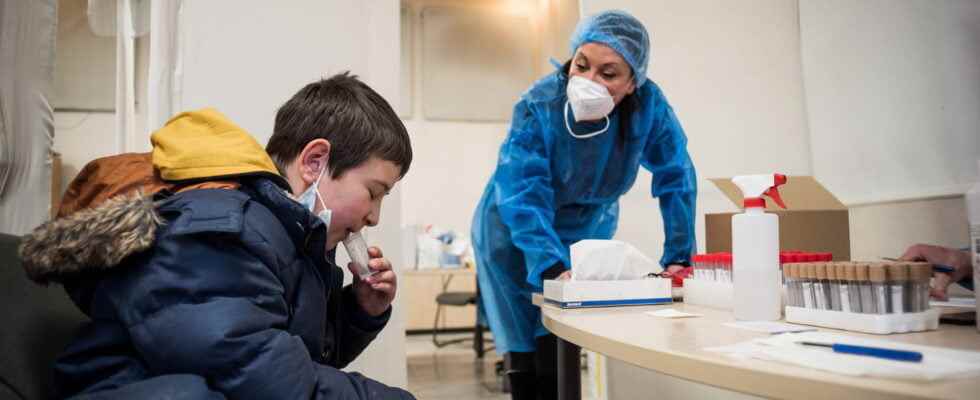CHILD CORONAVIRUS. As the coronavirus continues to rebound, where is the Covid-19 epidemic in children in France? Are they less, as much, or more affected than the general population? Here is the latest data available …
The Back to School has been accompanied by strong fears about the impact of the Delta variant in children under 12 years of age. The start of the November school year further accentuated these fears, with a Covid-19 epidemic in full rebound in France. And the coronavirus is indeed spreading very strongly in children since the start of the November school year, with record incidence rates in certain age groups. The evolution of the screening strategy in schools, and in particular the deployment of saliva tests for students, have obviously inflated these figures since mid-November. But these only confirm that SARS-CoV-2 circulates at least as strongly in children, a segment of the unvaccinated population, as in the rest of the population.
As France prepares to vaccinate 5-11 year olds to curb its spread, where is the coronavirus epidemic in children after returning to school following the All Saints holidays ? The government, via Public Health France and Data.gouv, has set up a certain number of indicators which allow the evolution of the Covid to be followed according to the age groups. In the graphs below, you can follow from day to day the number of positive cases detected daily in children (data on D-3), the evolution of incidence rates over the last week, but also the latest figures on the number of children hospitalized and in intensive care published each evening by the authorities. “
This dashboard presents the number of children 0 to 9 years old and 10 to 19 years old tested positively in the latest figures communicated by Public Health France (figures consolidated on D-3, updated every evening except Friday and weekend).
If we follow the evolution of the number of positive tests reported daily among 0 to 9 years old and 10 to 19 years old, the different waves of the coronavirus epidemic are clearly visible in the youngest. The indicators seem to follow the same trend as the general population data:
If you don’t see the infographic, Click here
Here is the incidence rate (number of cases per 100,000) measured in 0-9 year olds and 10-19 year olds. This rate is measured over the last calendar week. The gray curve represents the incidence rate in the general population.
The Ministry of Health and Data.gouv also provide incidence rates by school level, which give an idea of the spread of the virus on finer age groups and make the link with the circulation of Covid at school. . Note: this time the data is not delivered over the last calendar week (full week from Monday to Sunday), but over a sliding week.
How is this evolution in the number of cases and incidence in hospitals reflected? Here is the number of children 0-9 and 10-19 hospitalized with coronavirus infection. Figures updated every evening between 7 p.m. and 9 p.m.
PRECISION : the figures displayed in the table of hospitalizations in children above were erroneous for several hours on Wednesday, December 1, 2021 and it is the incidence which was displayed there (it was indeed necessary to read 387.48 cases per 100,000 and 234.64 cases per 100,000). We apologize for the inconvenience caused.
Read also
Here is the number of children 0-9 and 10-19 in intensive care due to coronavirus infection. Figures updated every evening between 7 p.m. and 9 p.m.
These Covid figures in children seem to draw a double observation: the youngest, who are not vaccinated before 12 years old, indeed seem to be affected as much in France by the coronavirus (if not more depending on the period), but these contaminations do not quite translate into hospitals and intensive care units. There remains the question of the accelerator that children can constitute in the progression of the epidemic. More affected, they can potentially transmit the virus more massively in the intrafamilial sphere and provoke a leverage effect. It is this argument that was taken into account in particular in the choice to close schools before the Easter holidays in 2020.
